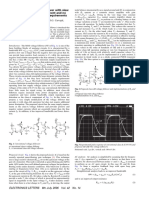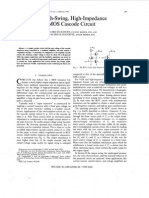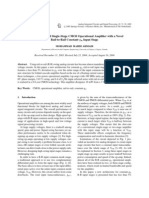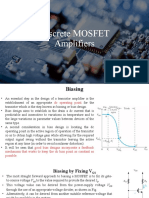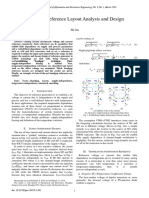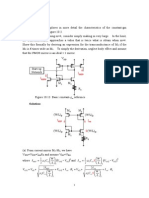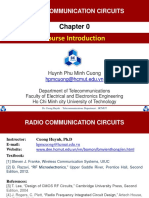0% found this document useful (0 votes)
18 views4 pagesGM Reference MWSCAS2020
The document presents a new constant gm current reference generator that utilizes a fully off-chip resistor, improving precision by 31% compared to conventional on-chip designs. This innovation reduces sensitivity to process variations and eliminates the need for costly post-silicon trimming. Measurement results demonstrate a stable reference current in a 0.18 μm CMOS technology, achieving a target of 40.6 μA.
Uploaded by
Punit RonadCopyright
© © All Rights Reserved
We take content rights seriously. If you suspect this is your content, claim it here.
Available Formats
Download as PDF, TXT or read online on Scribd
0% found this document useful (0 votes)
18 views4 pagesGM Reference MWSCAS2020
The document presents a new constant gm current reference generator that utilizes a fully off-chip resistor, improving precision by 31% compared to conventional on-chip designs. This innovation reduces sensitivity to process variations and eliminates the need for costly post-silicon trimming. Measurement results demonstrate a stable reference current in a 0.18 μm CMOS technology, achieving a target of 40.6 μA.
Uploaded by
Punit RonadCopyright
© © All Rights Reserved
We take content rights seriously. If you suspect this is your content, claim it here.
Available Formats
Download as PDF, TXT or read online on Scribd
/ 4

